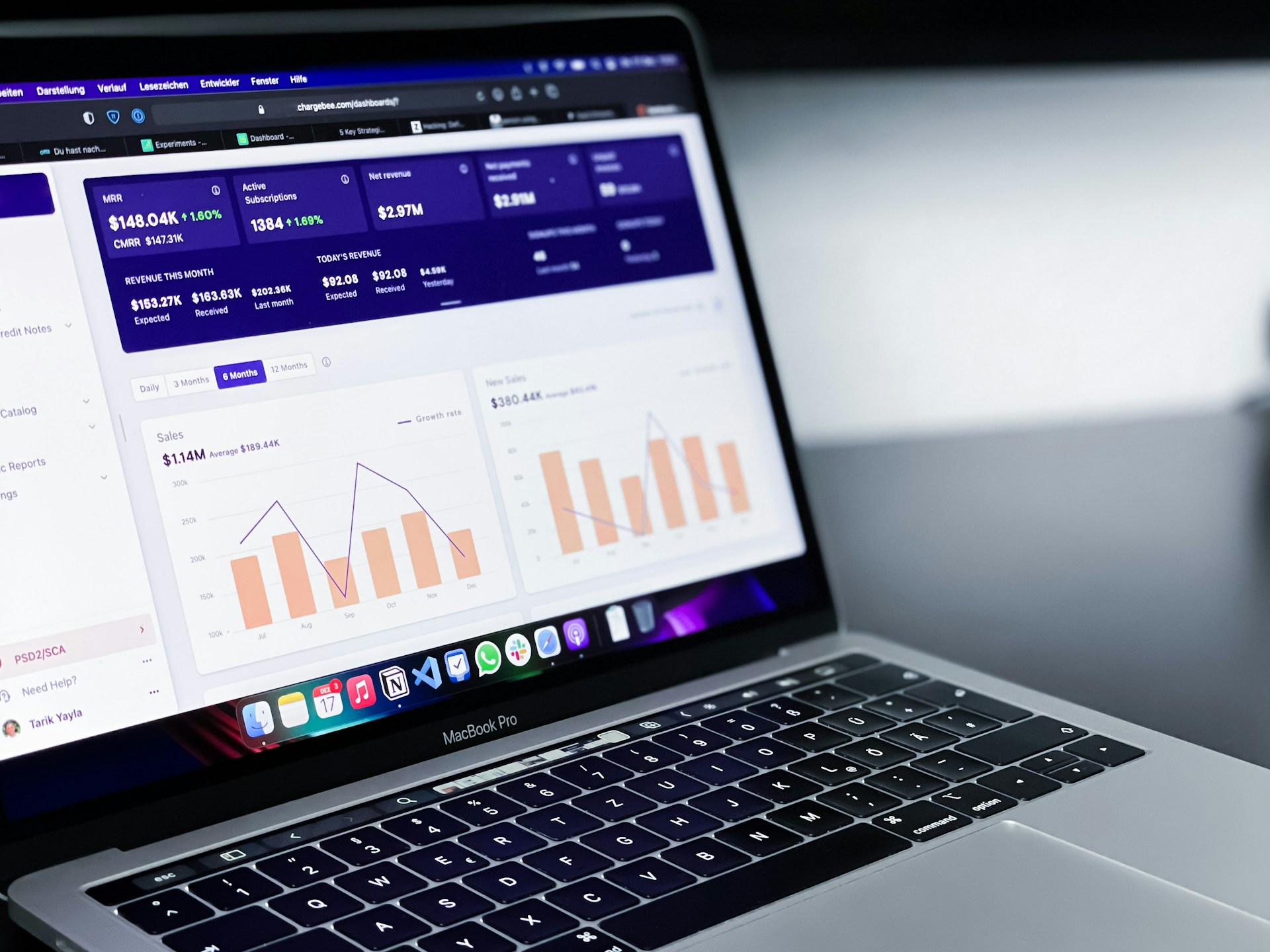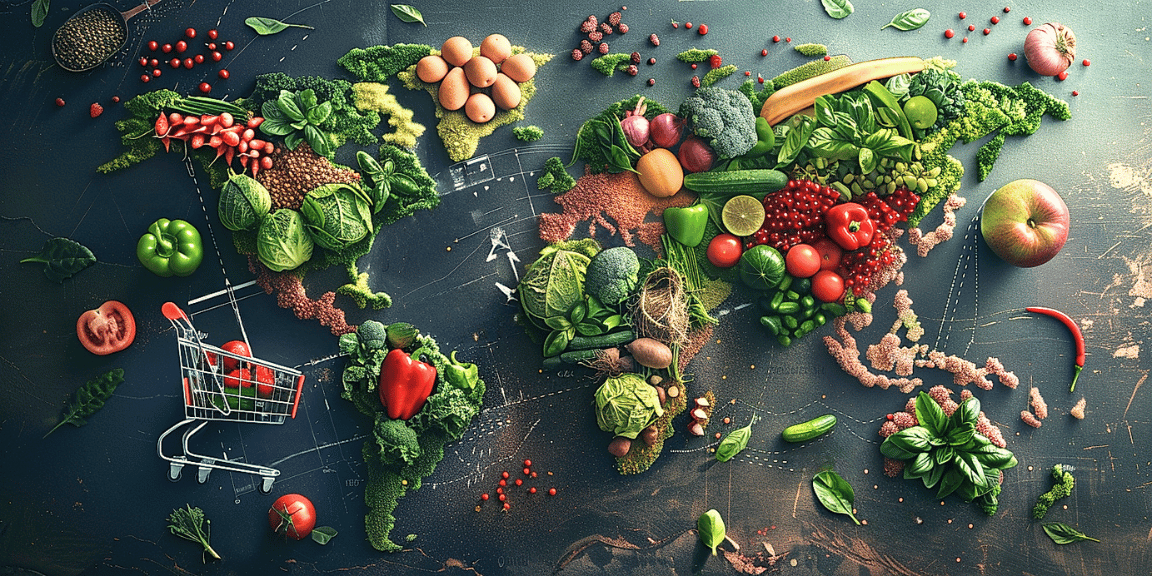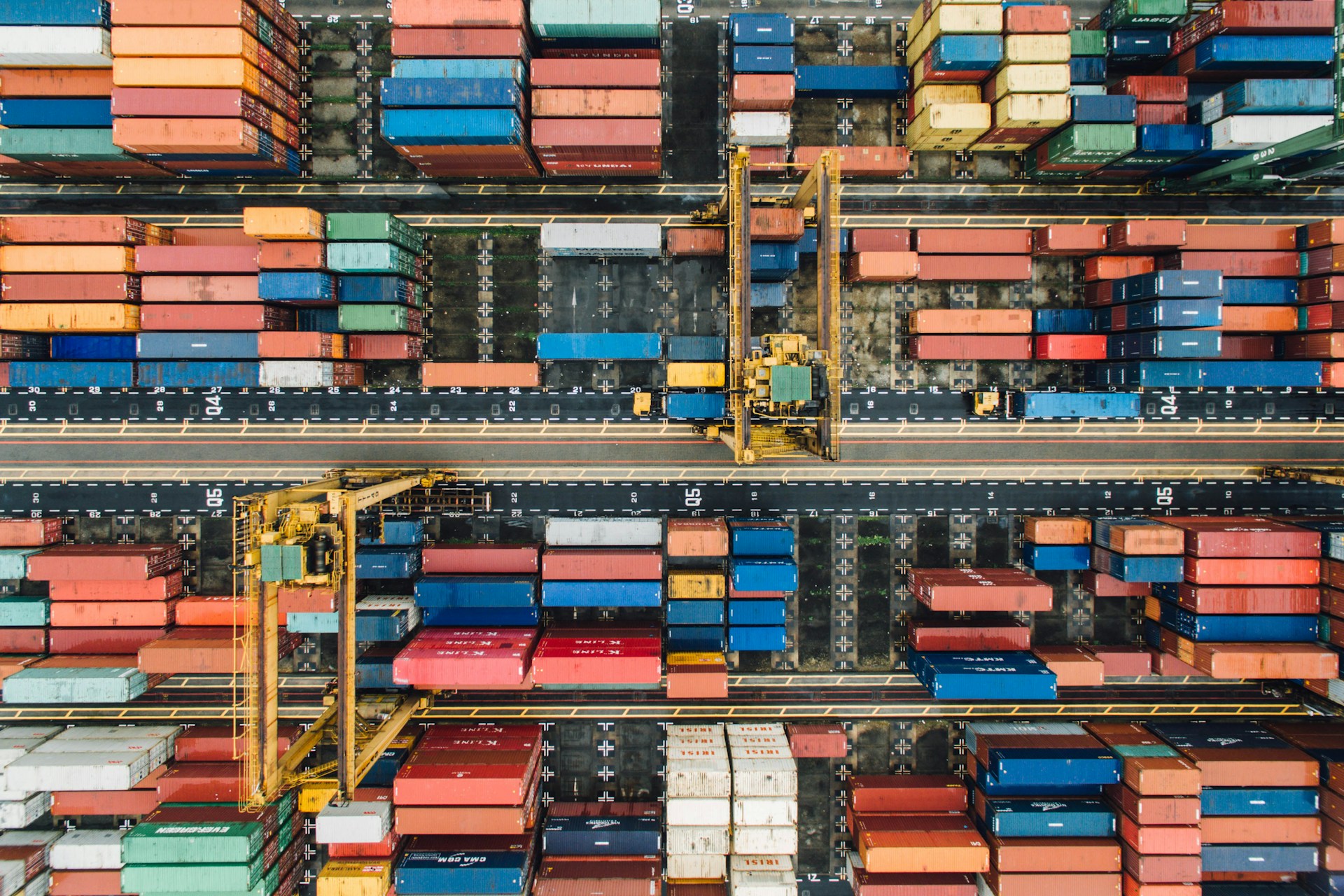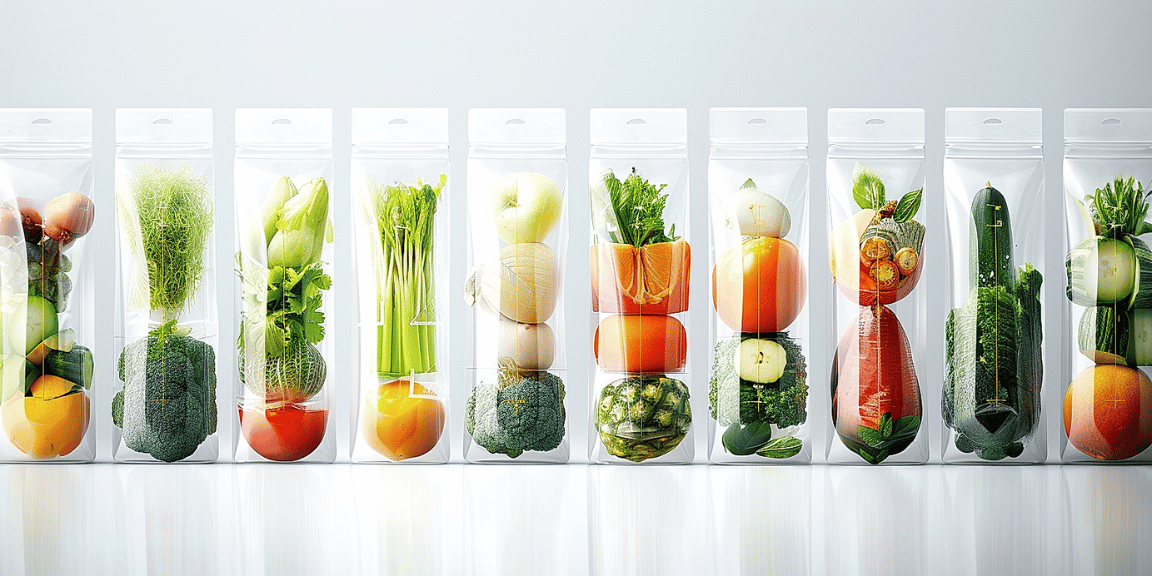With the continuous evolution of technology, the impact on the fruit and vegetable industry is conspicuous and the use of data analytics in optimizing fresh produce distribution has become increasingly significant.
Harnessing the power of data offers several benefits from improving efficiency to reducing waste and enhancing profitability.
This relevance of data cannot be underestimated as it aids in decision-making processes and strategic planning.
Deep diving into predictive analytics, it has emerged as a key player in the future growth of the produce distribution sector.
Hence, focusing on the trends surfacing in this arena becomes crucial for businesses to stay ahead in this competitive market.
In the upcoming sections, you’ll gain insights into these trends and their implications in reshaping the industry.
Contents
- Data Analytics Trends In Produce Distribution
- 1. Predictive Analytics for Supply Chain Optimization
- 2. Real-time Tracking for Improved Freshness
- 3. Demand Forecasting for Waste Reduction
- 4. Machine learning for disease detection
- 5. IoT in Cold Chain Monitoring
- 6. Automated Data-Based Pricing Strategies
- 7. Blockchain for end-to-end traceability
- 8. Personalized Marketing through Consumer Data
- 9. AI for Smart Harvesting Schedules
- 10. Data-driven sustainable farming practices
- The Bottom Line
Data Analytics Trends In Produce Distribution
1. Predictive Analytics for Supply Chain Optimization
Predictive analytics has fundamentally altered the landscape of supply chain management in the produce distribution industry.
Through the use of data and sophisticated algorithms, it’s now possible to forecast potential issues and disruptions in the supply chain before they occur.
An optimal supply chain is imperative for businesses to maintain profitability and establish a competitive advantage.
Specifically, in the produce distribution industry, predictive analytics helps to minimize perishability and wastage by ensuring timely delivery of produce.
The complex algorithms associated with predictive analytics can accurately calculate the best routes, times, and modes of transport to optimize the supply chain.
Moreover, it can model potential scenarios based on various factors such as weather conditions, demand fluctuations, and potential strikes or roadblocks.
Predictive analytics can also assist in accurate demand forecasting, thus avoiding overstocking or understocking of produce.
It allows for real-time adjustments in the supply chain, depending on changes in demand or supply conditions.
Predictive analytics collects, analyzes, and uses data to anticipate customer buying behavior, which can then be used to adjust supply chain strategies and operations.
It further enhances the speed and efficiency of the supply chain by reducing unnecessary costs and delays.
Predictive analytics also aids in increasing visibility throughout the supply chain, allowing businesses to make informed strategic decisions.
The ability to predict demand periods can allow companies to schedule their distribution in a way that maximizes their resources and ensures the highest level of freshness for delivered produce.
Moreover, this tool can significantly enhance the customer experience by ensuring products are always available when needed.
By implementing predictive analytics, companies can have a more streamlined and efficient supply chain that reduces operational costs and increases customer satisfaction.
In the era of digital transformation, embracing predictive analytics is not just a trend, it’s a necessity for any company in the produce distribution industry seeking to optimize their supply chain and stay competitive.
Indeed, predictive analytics for supply chain optimization is not just a fad but a critical strategy for the future of produce distribution.
2. Real-time Tracking for Improved Freshness
If there’s one thing all consumers want from their produce, it’s freshness. Fortunately, modern data analytics trends allow for the implementation of real-time tracking measures, leading to significant improvements in the freshness of produce by the point of sale.
The pivotal role of real-time tracking lies in the ability to monitor the condition of produce during transit.
Through the use of specially designed sensors, each product’s temperature, humidity, and geographical location can be observed in real time, ensuring optimal storage conditions are always maintained.
Tracking systems can provide early notifications of any unusual or adverse changes in the environment, allowing quick interventions to mitigate potential losses.
These interventions could include re-routing shipments to avoid delays and their associated spoilage, or adjusting the cooling systems on refrigerated trucks to maintain the ideal temperature for each type of produce.
The availability of real-time data enables proactive decision making, ultimately leading to fresher and better-quality produce on supermarket shelves.
The application of real-time tracking is particularly beneficial for time-sensitive products like berries, bananas, and leafy greens, which have a short shelf life and require very specific storage conditions.
Data analytics make it possible to track individual shipments and even individual packages, enabling suppliers and distributors to ensure that the freshest possible product reaches the consumer.
Moreover, with the rise of blockchain-based traceability systems, consumers might also soon be able to access real-time information about the freshness of the produce they are purchasing, boosting their confidence in the quality of the product.
In addition, by reducing instances of premature spoilage, real-time tracking can help cut down on the immense amounts of food waste caused by the produce industry every year.
Thus, the use of real-time tracking and analytical tools contributes to the sustainability of the produce distribution industry by minimizing waste and maximizing efficiency.
Real-time tracking may require significant investment in technology and infrastructure, but many industry players are finding that the advantages in terms of improved freshness, reduced waste, and increased consumer satisfaction are worth the cost.
As technology continues to advance and the costs associated with implementing real-time tracking solutions continue to decrease, it is likely that these systems will become even more widespread within the produce distribution industry.
3. Demand Forecasting for Waste Reduction
The role that demand forecasting plays in minimizing produce waste is paramount.
In the world of produce distribution, an accurate prediction of the demand is vital for efficient business operations.
It provides a roadmap of operations, facilitating prompt and effective decision-making.
Demand forecasting in these instances employs data analytics to predict future customer demands, ensuring that the supply chain is prepared for fluctuations in product requirements.
Additionally, it helps in manage inventory better, ensuring the availability of produce when customers want them and avoiding overstocking which could lead to waste from spoilage.
An effective demand forecasting system can significantly reduce food waste in the supply chain by aligning production schedules with actual demand.
With more accurate forecasts, companies can ensure they’re growing and buying only the necessary quantity of produce, thereby minimizing waste and maximizing profit.
Demand forecasting can also help in identifying patterns and trends, enhancing overall business strategy.
It can pinpoint high demand periods, helping businesses to manage supply during those periods optimally and equally, highlighting slow sales periods where lower production or supply would help eliminate surplus and hence, waste.
In recent times, technology’s influence on demand forecasting has become more pronounced with machines and algorithms now having the ability to analyze and interpret vast amounts of data rapidly and with better accuracy, leading to more reliable forecasts.
Machine learning and artificial intelligence have transformed the process, enhancing the software’s ability to learn from previous outcomes and improve its predictions over time.
Demand forecasting is also increasingly embracing real-time data. This involves harnessing up-to-the-minute sales data to adapt and revise forecasts instantly.
Anticipating demand prevents overproducing or underproducing, both of which could lead to considerable waste.
Ultimately, demand forecasting brings about an efficient supply chain that responds adeptly to the actual needs of the market, leading to reductions in waste, increased profits and a more sustainable business practice.
Thus, data analytics and technology aren’t just transforming how distributors handle their produce, but they’re helping to make the entire food chain greener and more responsible.
In the world of produce distribution, demand forecasting is no longer a choice, but a necessity for survival and sustainability.
4. Machine learning for disease detection
Among the emerging trends in the world of produce distribution, the use of machine learning for disease detection is particularly fascinating.
Imagine a future where diseases in crops can be identified and addressed early on, thanks to the power of machine learning and data analytics, that future is gradually turning into a reality.
The technology relies on deep learning algorithms that can inspect and analyze vast quantities of data generated through imagery captured by drones or satellites.
Now, these images are not ordinary images, they are multispectral and hyperspectral images that extend beyond the human visible spectrum, making it possible to detect diseases that are yet to manifest visual symptoms.
This rich dataset, supplemented with historical plant disease data, is used to train machine learning models that can predict and identify plant diseases with astonishing accuracy.
Machine learning is empowering farmers to tackle diseases proactively, minimizing their impact on yield and quality of produce.
It’s not just about detection, machine learning models can also be designed to track the progression of a disease over time, offering actionable insights to aid decision-making in the field.
Naturally, this reduces the uncertainty and risks associated with crop production, while ensuring higher yield and quality of produce.
Moreover, as these models continue to learn from newer data, they become more accurate and reliable in their predictions and can also adapt to changing agricultural conditions and disease patterns.
It’s worth mentioning that this technology has the potential to transform farming in remote and resource-poor regions, where access to expert plant pathologists may be limited.
Thanks to the scalability and affordability of machine learning, these communities can now have access to early disease detection tools that were once inaccessible.
That’s not all, machine learning can also play a role in disease prevention.
By analyzing the conditions that favor the outbreak of certain diseases, these models can predict potential disease scenarios and provide recommendations for preventative measures.
Remember, successful disease management in agriculture is not just about reacting to existing diseases, but also about preventing future outbreaks.
Given the pressing need for sustainable farming practices in light of changing climate and increasing global food demand, machine learning for disease detection could be a game changer.
Thus, the role of data analytics and machine learning in disease detection is a promising area of research that has significant implications for the future of produce distribution.
5. IoT in Cold Chain Monitoring
The integration of Internet of Things (IoT) in cold chain monitoring has emerged as a crucial trend in data analytics for produce distribution.
IoT devices collect and transmit data about the environment surrounding perishable goods as they move along the supply chain.
They can meticulously track temperature, humidity, light, and other essential factors that might affect the quality of fresh produce.
These devices ensure that the cold chain is not compromised at any point during transportation and storage.
The IoT driven data helps producers, transporters, and retailers to ensure that the necessary conditions are accurately maintained, guaranteeing the freshness and quality of the product until it reaches the consumer.
It also allows for real-time tracking and early detection of any potential issues.
For instance, if there is a drastic change in temperatures or any irregular parameters are detected, alerts can be instantly generated, and the issue can be resolved in a timely manner.
The data collected from IoT devices can be analyzed to uncover valuable insights.
It can pinpoint inefficiencies in the cold chain, helping businesses to refine their processes and optimize operations.
Moreover, the detailed information collected plays an integral role in maintaining compliance with agricultural regulations.
With consumers becoming more conscious about the provenance and handling of their food, the transparency provided by IoT in cold chain monitoring is highly beneficial.
It fosters robust and trustworthy relationships with consumers who can see the measures taken to ensure the quality and freshness of the produce they purchase.
IoT in cold chain monitoring helps to minimize waste, lower operational costs, reduce risk, and increase profitability.
Given these benefits, it is no surprise that more and more businesses in the produce distribution sector are integrating IoT into their operations.
The inclusion of IoT is revolutionizing the cold chain, turning it into a data-driven, predictive, and proactive system that helps to ensure the delivery of high-quality fresh produce.
6. Automated Data-Based Pricing Strategies
Today, the production and distribution of fresh produce is swinging from traditional manual methods to more sophisticated and efficient ones, made possible via data analytics.
The concept of automated data-based pricing strategies is one of the emerging trends in this transformation.
This method involves using algorithmic software to analyze historical sales data, customer demand, and market trends to optimize pricing factors.
The impact of this trend in the production and distribution of fresh produce cannot be over-emphasized.
The heavy reliance on predictive analytics has significantly increased the efficiency and profit margins of many businesses involved in the produce industry.
This strategy, when used in the context of fresh produce, can help businesses circumvent agricultural uncertainties like weather conditions, pests, diseases, and supply chain mishaps.
Thanks to data analytics, instead of pricing purely on a cost-plus basis, businesses can now dynamically adjust their prices based on real-time market fluctuations.
For instance, they can increase the price of a product if the demand is high and similarly, reduce it when the demand is low, thereby maximizing their profit.
Furthermore, automated pricing strategies allow businesses to respond quickly to the actions of their competitors.
If a competitor suddenly drops the price of a product, the business can respond in real-time without undergoing a manual pricing evaluation process.
Additionally, using automated pricing strategies helps businesses to eliminate human errors, increasing the overall efficiency of the pricing process.
Moreover, with the help of machine learning algorithms, automated pricing policies can continuously learn and adapt from the data they are given, becoming more precise and efficient over time.
In some cases, these systems can even predict consumer behavior, further helping businesses to refine their pricing strategies and stay one step ahead of the competition.
Companies using automated data-based pricing strategies have reported significant increases in revenue and profits, as well as improved customer satisfaction rates.
It is, therefore, safe to say that this technology has created a win-win situation, benefiting both the businesses and their customer base.
As more businesses in the produce industry become aware of these benefits, the popularity and usage of automated data-based pricing strategies are expected to further increase.
Overall, the automation of data-based pricing is among the most significant trends currently shaping the fresh produce distribution industry.
7. Blockchain for end-to-end traceability
In the ever-evolving landscape of the produce distribution industry, one technology is starting to play a vital role – blockchain.
Simply defined, a blockchain is a distributed ledger that records transactions across multiple devices, making them permanent and impossible to alter.
Within the context of produce distribution, this technology finds immense utility for end-to-end traceability.
Manipulating a blockchain is near impossible, meaning that every piece of information is accurate and reliable.
This opens a whole new world of transparency in the produce distribution chain, where the origins and route of every food item can be tracked in real-time.
From the farm where it was grown to the grocery store where it is sold, each step can be verified and authenticated with confidence.
For businesses, this full transparency can help to eliminate the risk of fraudulent transactions.
Moreover, it allows stakeholders and consumers alike to make more informed decisions about the produce they are dealing with or consuming.
This is particularly relevant in the wake of increased consumer demand for sustainability and ethical sourcing.
In such a scenario, blockchain can provide the desired transparency for customers to choose products that align with their values, thereby helping businesses to improve their customer satisfaction and loyalty.
Additionally, in the unfortunate event of a food safety issue, businesses can significantly reduce the response time by quickly identifying the source and potential scale of the problem.
This enables faster and more efficient product recalls, reducing the risk of health impacts and protecting the brand’s reputation.
Furthermore, blockchain in conjunction with data analytics can drive more efficient agricultural practices in the production phase, which in turn, can contribute to reducing food waste and loss across the chain.
Last but not least, it can facilitate smarter payment and contract systems, wherein farmers can receive automated payments as soon as their produce meets predefined quality and delivery requirements.
Blockchain does come with its set of challenges, such as the scalability and the complexity of the technology, but the overwhelming advantages it offers in terms of traceability, transparency and efficiency are indisputable.
8. Personalized Marketing through Consumer Data
Personalized marketing has increasingly become a central strategy for businesses in the produce distribution sector.
Understanding the preferences, needs, and behaviors of consumers is crucial for maximizing sales and customer engagement.
Data analytics plays a vital role in enabling businesses to gain these insights by analyzing consumer data.
The data can be sourced from various channels such as websites, social media, buyer history, and customer feedback.
The analyzed data is then used to create personalized messages and targeted marketing campaigns for specific customer segments.
Through data analytics, businesses can tailor their offers, products, and communication strategies to better meet the needs and preferences of individual consumers.
This process significantly enhances customer experience and increases the chances of repeat purchases.
Furthermore, personalized marketing through consumer data enables the produce distribution companies to predict future consumer behavior.
This, in turn, helps in effectively managing inventory, determining pricing strategies and enhancing the efficiency of the supply chain.
Data analytics also allow companies to identify trends and patterns that can be used to innovate and offer new products that cater to changing consumer needs and preferences.
Moreover, data-driven personalized marketing can increase the effectiveness of promotional campaigns and improve the overall marketing ROI.
Precision marketing, enabled by data analytics, can help a business stand out in a competitive marketplace.
However, to effectively leverage data analytics in personalized marketing, businesses need to address challenges related to data privacy and security.
Regulations such as the General Data Protection Regulation (GDPR) push companies to ensure data privacy and security while using consumer data for marketing purposes.
Despite these challenges, personalized marketing through consumer data remains a promising trend for the produce distribution companies, thanks to data analytics technology.
9. AI for Smart Harvesting Schedules
In discussing the implications of data analytics trends in produce distribution, the role of artificial intelligence (AI) in the creation and management of smart harvesting schedules cannot be overlooked.
This technological advancement uses advanced algorithms and machine learning to study patterns, weather forecasts, and crop behavior to determine the optimal time for harvest.
Through AI technology, farmers can now make informed decisions on when to harvest, thus reducing crop waste due to premature or late harvesting.
Artificial intelligence also ensures that the harvested produce retains maximum freshness, essential for high market value and consumer satisfaction.
AI has rapidly become a game-changer for farmers and produce distributors by optimizing the harvesting process based on real-time data analysis.
When produce is harvested at the right time, the distributor is also able to streamline their supply chain; with the ability to anticipate the volume of fresh produce coming in, distribution strategies can be made in advance.
Moreover, AI technology can learn from past data and continually improve the accuracy of its harvesting schedule predictions, making it an increasingly useful tool for the agriculture sector.
Cost savings are another significant benefit of AI; by intelligently predicting and advising on the best harvesting times, farms can reduce unnecessary costs associated with premature harvesting or overripe produce.
This is especially beneficial in today’s agricultural environment, where profit margins can be slim and any opportunity to save money and resources is vital.
An investment in AI technology for smart harvesting schedules can thus result in substantial returns in the long run.
The use of AI in smart harvesting also contributes to sustainability efforts in farming.
Less waste means less strain on natural resources, which directly leads to more sustainable farming practices – a trend more and more consumers want to see.
In fact, smart harvesting scheduling using AI can provide a competitive advantage for the agriculture industry, potentially attracting clients who prioritize sustainability.
Artificial intelligence, despite being a relatively recent development in the agriculture field, has already showcased its potential in redefining harvesting strategies.
Therefore, leveraging AI for smart harvesting schedules is evidently a significant data analytics trend in produce distribution, providing a multitude of benefits for both farmers and produce distributors.
10. Data-driven sustainable farming practices
The advent of big data and analytics has transformed various sectors, and agriculture is no exception.
Modern farming methods are increasingly turning to data-driven sustainable approaches to boost production while minimizing environmental impact.
Analytics enables these practices by providing insights into factors like weather patterns, soil conditions, crop health, and more.
The optimal way to apply fertilizers and pesticides, best planting seasons and crop rotation strategies are all determined by data analytics.
By leveraging data, farmers can increase crop yield, reduce waste, lower costs, and improve sustainability.
This is of importance in produce distribution as well, as it allows distributors to source from sustainable farms, maintaining a green supply chain.
Data-driven sustainable farming practices have the potential to produce healthier crops, reduce environmental impact, and lead to more efficient and sustainable produce distribution.
Distributors can integrate data from these farming practices into their supply chain models for better forecast, planning, and execution.
On the other hand, data can also help identify farming practices that might be damaging the environment or leading to unnecessary waste, enabling corrective measures to be put in place.
This data-centric approach adds a layer of transparency to farming and distribution processes, aiding in sustainability audits and certifications as well.
Moreover, with increased awareness and demand for sustainably grown produce, a distributor showcasing transparent and data-backed sustainability practices can surely gain a competitive edge.
Data analytics isn’t solely about profit and efficiency.
It’s about making the most out of our resources, lowering our carbon footprint, and contributing to a healthier, more sustainable planet.
Data-driven sustainable farming practices, in conjunction with other data analytics trends, hold the key to the future of sustainable agriculture and produce distribution.
Furthermore, data-driven precision farming opens up new frontiers in agricultural research and development, paving the way for innovative, more sustainable methods of growing and distributing produce.
It’s an exciting time for produce distributors to be able to contribute to sustainability while enhancing their operations, courtesy of data analytics.
The Bottom Line
Agriculture’s future is undisputedly tied to technology, leveraging data for efficiency, sustainability, and profitability.
Predictive analytics, real-time tracking, demand forecasting, and machine learning each play crucial roles in optimizing supply chains, preserving freshness, reducing waste, and detecting diseases early on.
Cold chain monitoring sees vast improvements through IoT, with automated data-based pricing strategies, end-to-end blockchain traceability, and smart harvesting schedules powered by AI becoming the new norm.
Powerful insights from consumer data drive personalized marketing approaches, while data-centric methods usher in a new era of sustainable farming practices.
The integration and application of these technological breakthroughs are rapidly reshaping and progressing the agricultural sector.




